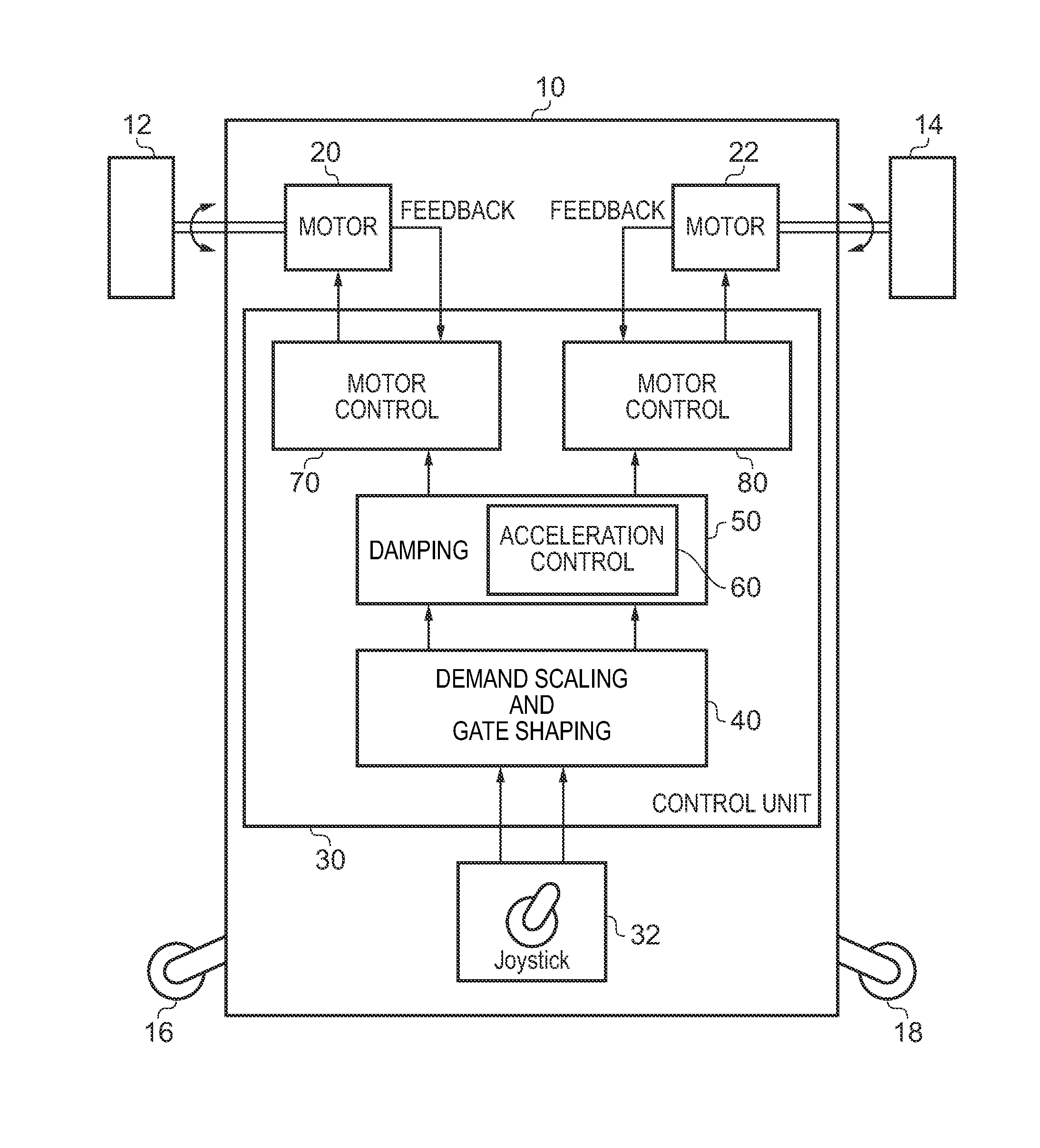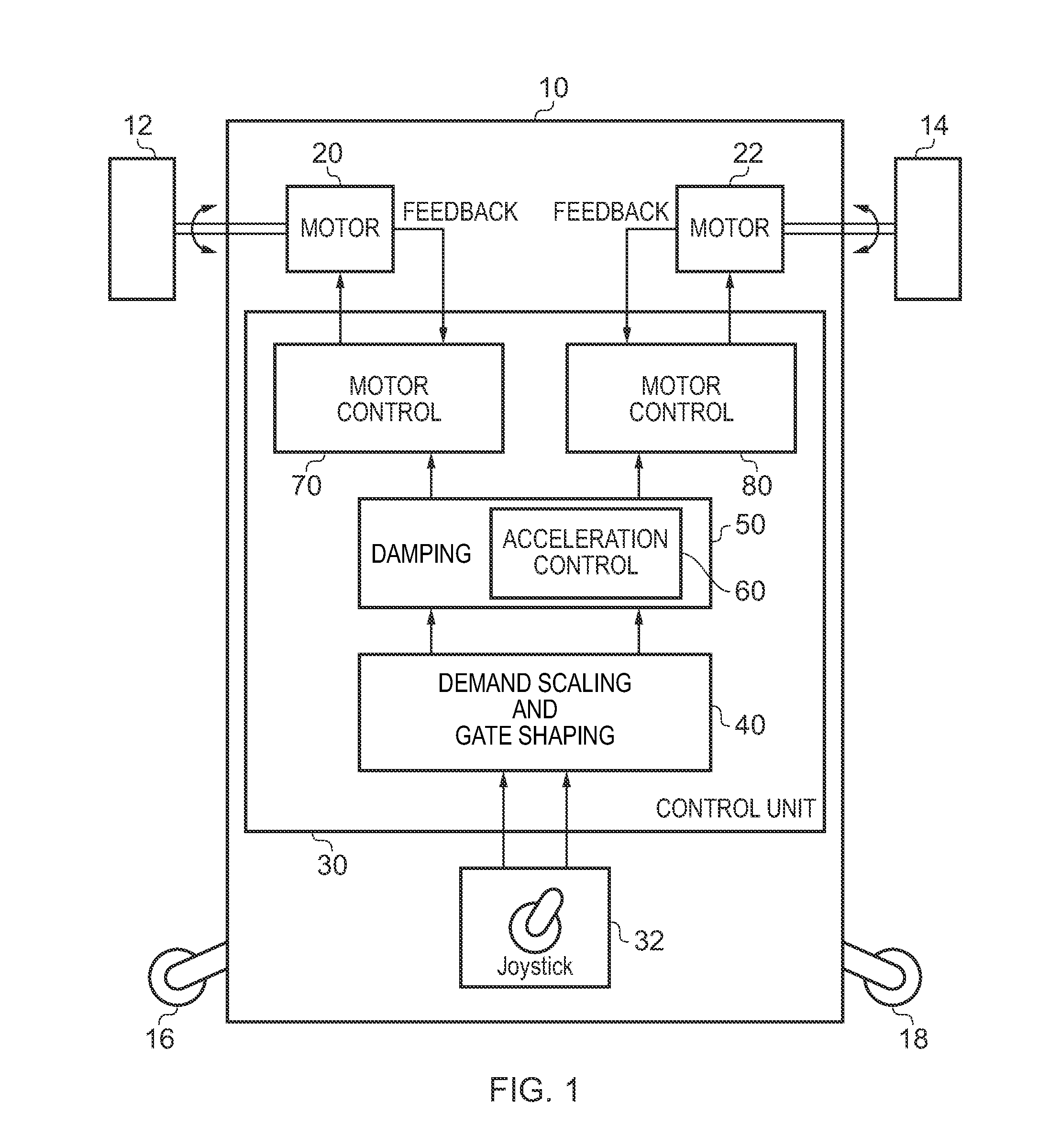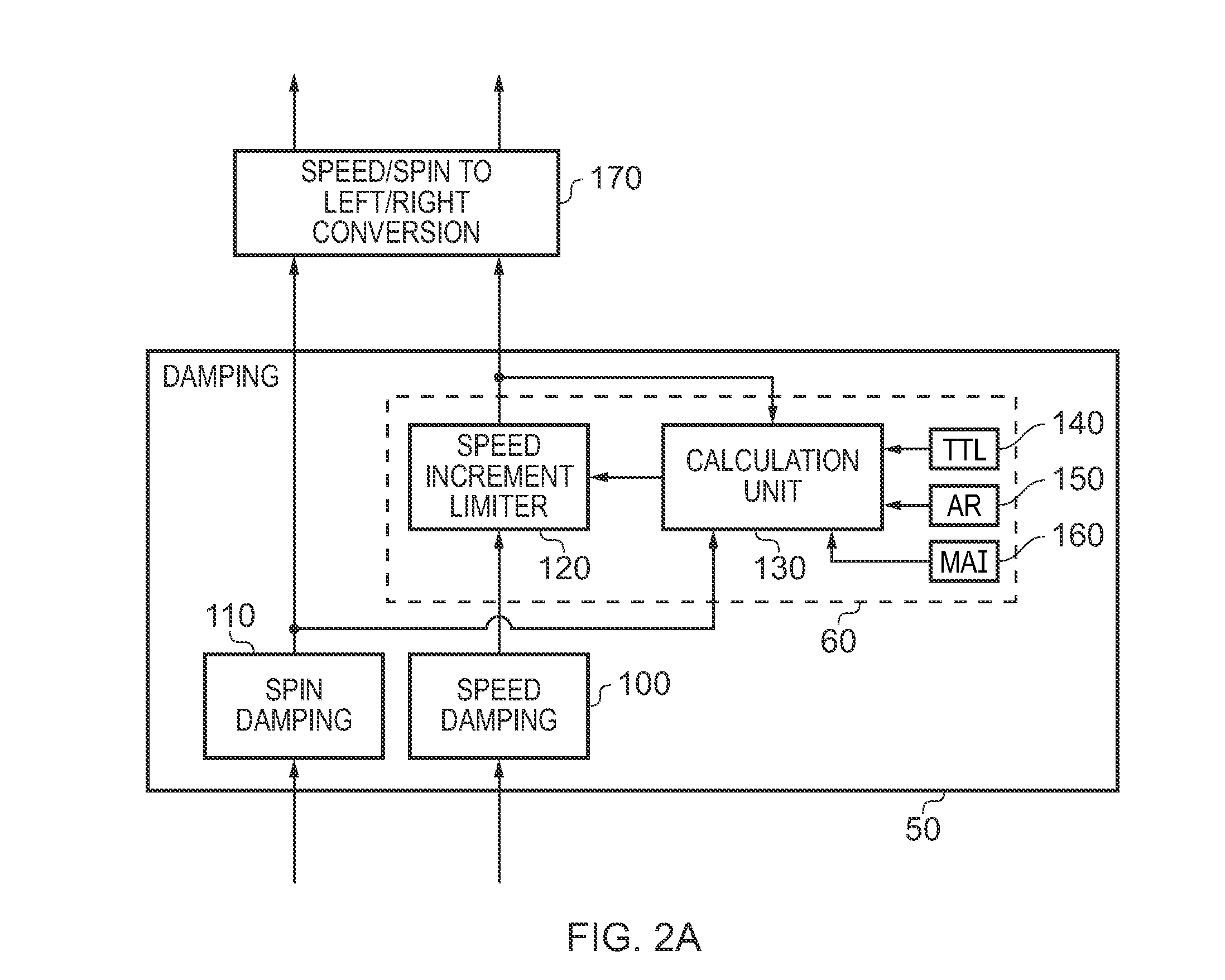Controller and Control Method for a Motorised Vehicle
a control method and motorised vehicle technology, applied in the direction of vehicles, position/direction control, medical transportation, etc., can solve the problems of wheelchair toppling, wheelchair toppling, and loss of traction of one wheel, so as to achieve easy configuration and easy control
- Summary
- Abstract
- Description
- Claims
- Application Information
AI Technical Summary
Benefits of technology
Problems solved by technology
Method used
Image
Examples
Embodiment Construction
[0039]FIG. 1 is a block diagram of a motorised vehicle in accordance with one embodiment of the present invention. For the purposes of the following discussion, the example where the motorised vehicle is an electric wheelchair will be used. In the example of FIG. 1, the electric wheelchair has a chassis 10 to which two motor driven wheels are connected, namely a left wheel 12 and a right wheel 14. Further, a pair of castors 16, 18 are also provided on the chassis which rotate to follow the direction of the travel of the wheelchair. In the illustrated example, the wheelchair is a front wheel drive wheelchair, so that castors 16, 18 typically follow the direction in which the driven wheels 12, 14 lead (except of course when the wheelchair is in reverse). Each of the two motor driven wheels 12, 14 is driven independently by a motor. In the embodiment illustrated, the left wheel 12 is driven by the motor 20 and the right wheel 14 is driven by the motor 22. To make the electric wheelchai...
PUM
| Property | Measurement | Unit |
|---|---|---|
| centripetal force | aaaaa | aaaaa |
| acceleration | aaaaa | aaaaa |
| speed | aaaaa | aaaaa |
Abstract
Description
Claims
Application Information
 Login to View More
Login to View More - R&D
- Intellectual Property
- Life Sciences
- Materials
- Tech Scout
- Unparalleled Data Quality
- Higher Quality Content
- 60% Fewer Hallucinations
Browse by: Latest US Patents, China's latest patents, Technical Efficacy Thesaurus, Application Domain, Technology Topic, Popular Technical Reports.
© 2025 PatSnap. All rights reserved.Legal|Privacy policy|Modern Slavery Act Transparency Statement|Sitemap|About US| Contact US: help@patsnap.com



